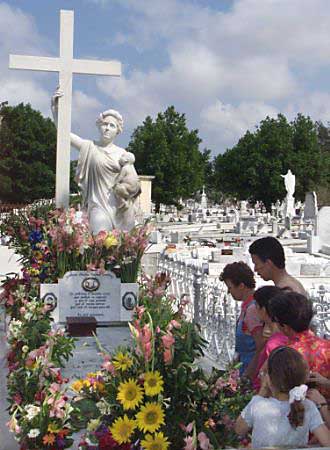









| Colon Cemetery Havana, Cuba |
|||
The Havana Cemetery of Colon, reflects the history of Cuba from the independence wars at the end of the 19th century to the 1959 Revolution of Fidel Castro. -March 24, 2002, REUTERS/Rafael Perez |
|||

The tomb of 'La Milagrosa' (The miraculous woman) in Colon Cemetery, who died giving birth in 1901 and whose body was discovered intact 10 years after her death. Since then, people visit her tomb daily to ask for favors. -March 24, 2002, REUTERS/Rafael Perez
|
|||
|
If you have any picture
or comment that you want me to add to this page, please
send it to Cut & Paste
Collection and make
sure you write it in the subject of your e-mail.
|

